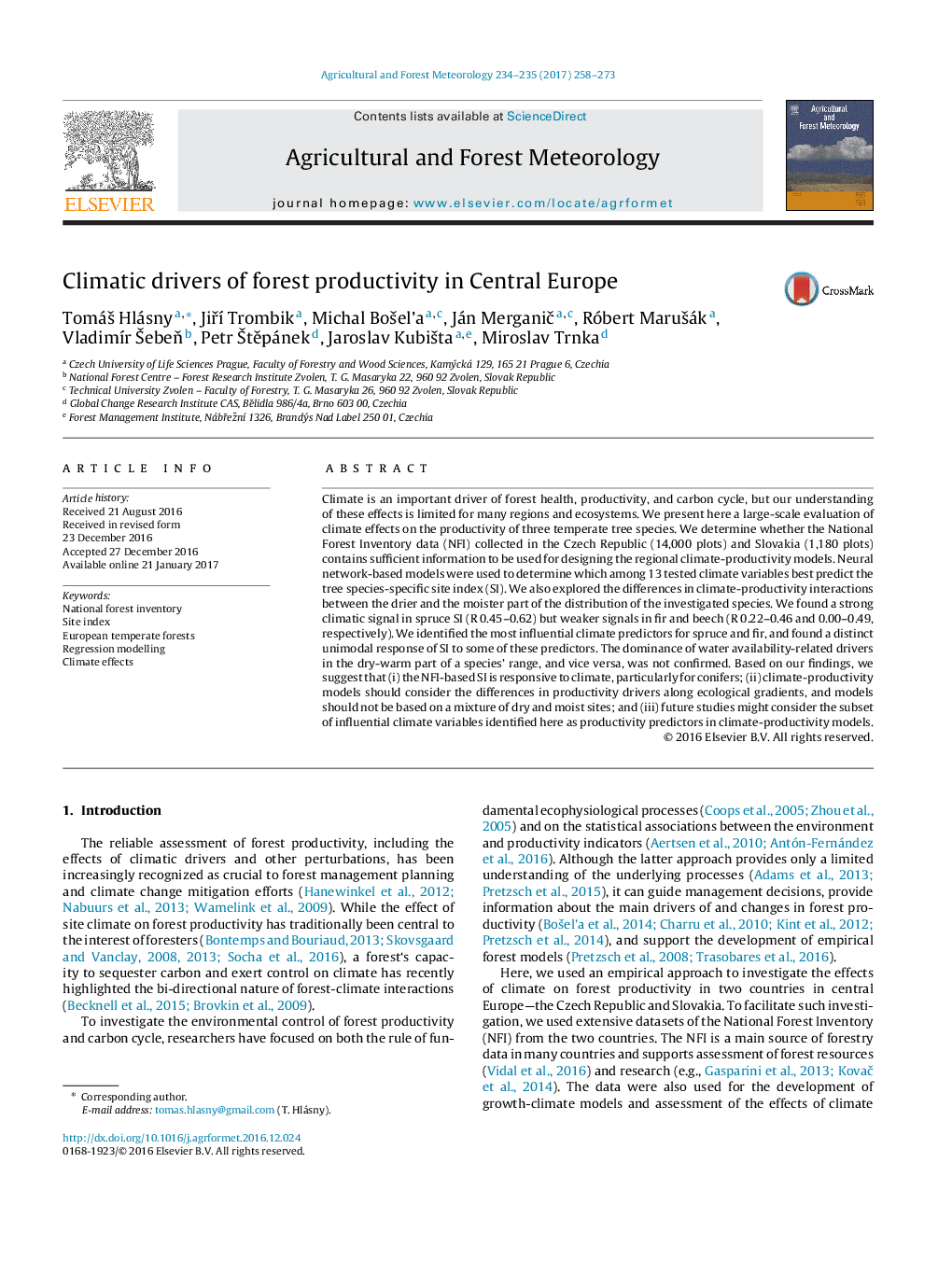| Article ID | Journal | Published Year | Pages | File Type |
|---|---|---|---|---|
| 6458020 | Agricultural and Forest Meteorology | 2017 | 16 Pages |
â¢Two National Forest Inventories from Central Europe were investigated.â¢Productivity of spruce and fir but not of beech was sensitive to climate.â¢Productivity drivers differed between cool-moist and dry warm parts of species ranges.â¢Productivity models should avoid mixing data from moist and dry sites.
Climate is an important driver of forest health, productivity, and carbon cycle, but our understanding of these effects is limited for many regions and ecosystems. We present here a large-scale evaluation of climate effects on the productivity of three temperate tree species. We determine whether the National Forest Inventory data (NFI) collected in the Czech Republic (14,000 plots) and Slovakia (1,180 plots) contains sufficient information to be used for designing the regional climate-productivity models. Neural network-based models were used to determine which among 13 tested climate variables best predict the tree species-specific site index (SI). We also explored the differences in climate-productivity interactions between the drier and the moister part of the distribution of the investigated species. We found a strong climatic signal in spruce SI (R 0.45-0.62) but weaker signals in fir and beech (R 0.22-0.46 and 0.00-0.49, respectively). We identified the most influential climate predictors for spruce and fir, and found a distinct unimodal response of SI to some of these predictors. The dominance of water availability-related drivers in the dry-warm part of a species' range, and vice versa, was not confirmed. Based on our findings, we suggest that (i) the NFI-based SI is responsive to climate, particularly for conifers; (ii) climate-productivity models should consider the differences in productivity drivers along ecological gradients, and models should not be based on a mixture of dry and moist sites; and (iii) future studies might consider the subset of influential climate variables identified here as productivity predictors in climate-productivity models.
